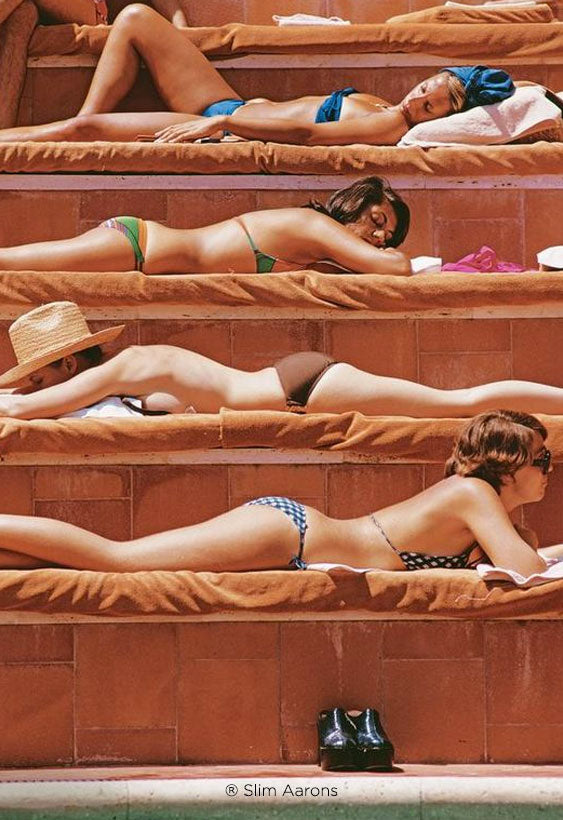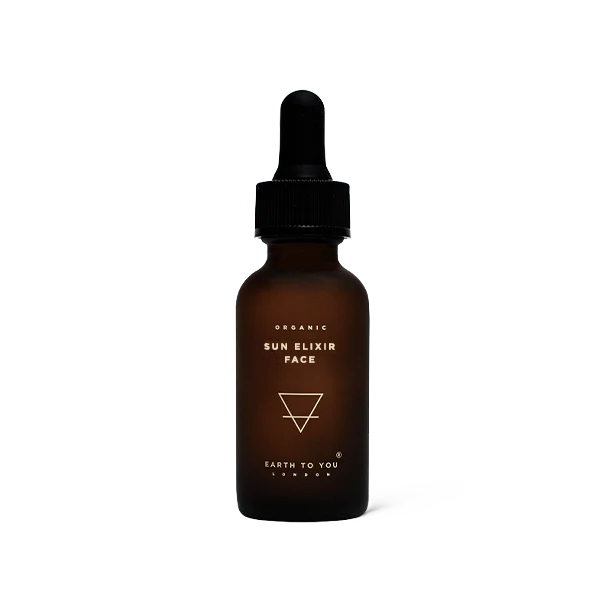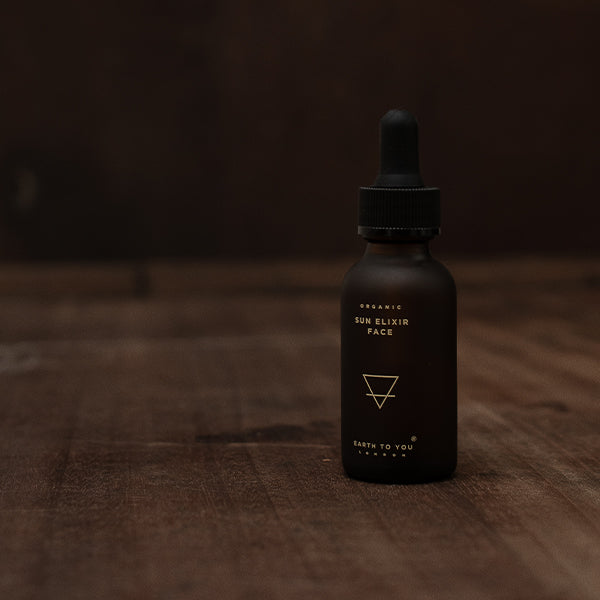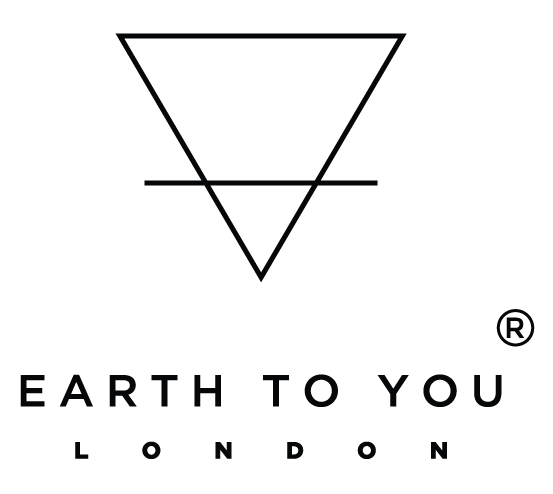An Invitation To Establish A Healthier & Wiser Relationship With Life Giving Sun
There are many major sources through which different levels of energy are assimilated into our bodies - Sunlight, Earth's electromagnetic fields, Breath, Food, and cosmic energy. But we are going to talk about our biggest nutrient deficiency - sunlight
All of us are meant to have a healthier, wiser relationship with the Sun. The Sun is a massive energy source that gives life to every living being on Earth. The barriers we have been told to put between the Sun and us in the name of beauty - when we don't actually need it - is the very idea we must question first to open the door to having a wiser relationship with the Sun.
.
Yes, protecting our skin from excessive UV rays is important, but is nature really broken, Are we broken? So broken that we are reliant on chemical intervention to "shield" us from the harms of nature 365 days a year, even in winter? Or Does the innate intelligence that lives inside all of us, which we are yet to fully understand, already has a plan? And the more we disturb that intelligence, the more we may be getting in its way?
.
It feels like we are being sold a whole other problem — to which the answer is to consume chemical-laden products? Even though many studies are linking common ingredients in sunscreens to various adverse health effects. One study showed that sunscreen ingredients like oxybenzone and octinoxate could cause endocrine disruption and developmental impairments, making them neurotoxic to humans and other living things. Even more alarming is that some parts of the world are banning sunscreens because of their confirmed harmful effects on wildlife (coral reefs). On top of these, we must remember that science needs data, so one chemical considered safe today might not be safe at all in 10 years!. Recently banned Johnson & Johnson baby powder is a great example. It has been sold since 1894. It only took a century of accumulation of data to ban a product used on babies! If this is not a sign that we should become our own scientists for our own health and well-being, we don't know what is?
.
It may surprise you to learn that there are ways we can strengthen our skin's response to sunlight. The body knows exactly how to deal with sun exposure in healthy ways— and when the body is in a holistic state of balance (called "homeostasis"), it is all the easier for the body to accomplish this naturally.
.
By the end of this article, you will discover that the unhealthy, frail, and unnourished skin is the exact type of skin that's most vulnerable to UV rays and many other skin problems. A sunscreen is not going to solve the underlying cause of unhealthy skin. A sunscreen is needed when you need immediate protection from direct sunlight when the sun is at its strongest. Although that's also a very unhealthy way of spending time under the sun and you should be taking other safety measures as well which can be found here. In fact, excessive use of sunscreens when we don't need it will only make it worse by further damaging the skin barrier and blocking Sun's life-giving energy that we must receive to live a healthy life.
First, let's discover what SUN means to us and every living being on Earth

Our bodies are solar batteries! | All about EZ water
Inside all of us and every living being is the potential for a liquid crystalline phase of water called EZ water (short for Exclusion Zone water, explained here by research) coined by scientist, researcher and PhD professor Gerald Pollack.
When the Sun shines and passes through the body's peripheral tissues in a healthy manner, it splits into positive and negative charges within the body's waterways, creating a beautiful liquid crystal form. Pollack's research shows that this viscid, alkaline, liquid-crystalline water phase functions like a "gel" within the intracellular and interstitial fluids around our cells in our lymphatic systems etc.
All the water inside the living organism then becomes composed of this modified water in the right conditions and when given the proper sunlight exposure, which Pollack labelled EZ water. Put a flashlight up to your fingers in the dark: the light will shine through. This proves that Sunlight penetrates through the surface of organic tissues. The water within us is full of usable potential energy at a cellular level made by the Sun.
Pollack's research shows that when this battery is "charged," and EZ water is plentiful inside us, it can help combat health issues related to inflammation (c-reactive proteins), free radicals (working like an antioxidant), amplifying the body's (and the skin's) hydration potential, boosting nerve function (relieving pain), and even reducing the risk of cancer or supporting cancer therapy.
It doesn't end there. This research on fostering more EZ water to occur naturally in our bodies— with the help of healthy sun exposure— has implications for migraine, fibromyalgia, depression, Parkinson's, cardiovascular disease, mental health disorders, arthritis, and muscular health.
Gerald Pollack's research has shown that EZ water can "grow" bigger and become more effective for our holistic health when exposed to infrared (IR) light/heat. This EZ crystal surrounds the entire connective tissue network inside our bodies, creating a continuous network all the way down to the extracellular matrix and into the cell as cytoskeleton/nuclear matrix.
Simply put: the water inside you and every living being is a massive self-healing battery charged by the Sun. When sunscreens and SPF are used too liberally to block all exposure to Sun— for fear of "sun damage" that could lead to accelerated ageing, increased skin cancer risk, and more— it may, in reality, interfere with the innate wisdom already there within our bodies, wisdom that knows how to protect against and heal ourselves of these exact same things with help, and not harm from, sun exposure.
In short: our "sun phobia" is not helping us; in fact, it is getting in our way in this context!

Frequencies (colours) of Sunlight for Health | Getting Sunlight at critical times is good for you
The anatomy of the body is important in understanding the health benefits of Sunlight. But what about the anatomy of Sunlight itself?
Break apart a sunbeam (so to speak), and you will find all the colours of the rainbow: red, orange, yellow, green, blue, indigo, and violet. It turns out these different spectrums of light, all found inside the white light of Sunlight (from infrared to ultraviolet), have different important physiological roles and processes for health. In order to experience these benefits, we need adequate exposure to different colours and spectrums.
INFRARED light is available from the first appearance of light in the sky, before sunrise until sundown, at its strongest in the middle of the day. This spectrum of light is red in colour, heat-creating, and the kind that builds the EZ Water inside our bodies. Every cell in our body requires this water for energy.
Red light also stimulates your mitochondria to produce ATP in your body. What is ATP, you may ask? Adenosine triphosphate (ATP) is an organic compound that provides energy to drive many processes in living cells, such as muscle contraction, nerve impulse propagation, condensate dissolution, and chemical synthesis.
Red light also stimulates the production of collagen and skin healing. It speeds up the healing of wounds and cuts and reduces the likelihood of a scar, according to studies.
BLUE LIGHT is more controversial. According to UC Davis it has important benefits to health, such as regulating your sleep cycle, promoting natural energy levels, and ensuring the healthy development of your eyes (along with supporting good eyesight). You can get healthy exposure to natural blue light from the Sun in the early hours of the morning (7–10 am).
While Blue light from the Sun helps us maintain our circadian rhythm, the excessive blue light from screens, tablets, and smartphones can be harmful to our bodies. It is important to note the difference!
UVA LIGHT (ultraviolet A) appears when the Sun is lower in the sky (such as early dawn or late dusk). UVA light increases the production of melanin in the skin, our very own natural sun protector and antioxidant, according to studies.
Melanin is a type of pigment that gives colour to hair, skin, and eyes in humans and animals. Melanin absorbs light to split water molecules inside our bodies to make O2 for energy and H2 an antioxidant. UVA also makes nitric oxide in the blood vessels, which vasodilates them and improves blood flow.
UVB LIGHT (ultraviolet B) appears when the Sun is lower in the sky as well, though mostly at dusk and not at dawn. It is responsible for synthesizing types of vitamin D in our bodies which cannot be provided by a vitamin D3 supplement. UVA and UVB also make serotonin (happiness) and dopamine (motivation) hormones in our bodies.

Vitamin D | Sun exposure vs supplements
We can't talk about the health benefits of sun exposure without talking about vitamin D.
As we mentioned earlier, certain physiological processes in our bodies are energized by the Sun, and without Sun, those processes simply can not happen.
Vitamin D3 is the nutrient created in your skin when you are exposed to Sunlight. It can also be found in supplements and foods (animal products).
Vitamin D2 is another version found in plant-based foods, mushrooms, and supplements. However, research shows that it is "less effective" of the two in terms of supporting your body's vitamin D-related health needs (strong immunity, liver health, bone health, creation of neurotransmitters, mental health, etc.). Hands down, you need more Vitamin D3!
The inhumane, unethical treatment of animals and the negative impact of consuming animal products on the planet has led many of us to change our diets and lifestyles or at least try to consume farm-sourced animal protein just like in the old days.
Unfortunately, in order to get adequate vitamin D3 levels that are competitive with what the Sunlight creates in your own body, you must consume animal products— or one must take vitamin D3 supplements that are almost always created from some sort of animal-based ingredient (like fish oil or lanolin). Unfortunately, plant-based sources (D2) come nowhere near having the same benefits for health as D3.
But there is a better way! Step out into the Sun before 10am and follow your morning ritual (which we will explain) without sunscreen, SPF or sunglasses to produce the greatest nutrient-dense vitamin D. Plus, you are getting plenty of other benefits we just mentioned above.

Skin microbiome | Our very own sun protector
The negative repercussions of sunscreen chemicals themselves are enough to make one think twice about applying sunscreen or SPF 'unless you really need them when exposed to strong midday sun in summer'. But aside from the broadly researched harms and claims, there's another dimension to the sunscreen controversy: the effect of sunscreen on the skin microbiome.
What is the skin microbiome? Similar to the gut microbiome, the skin microbiome (also called skin flora or skin microbiota) is the incredibly diverse web and interplay of beneficial bacteria and other microorganisms that live on our skin. Just like in our gut, these fill a prominent role in our skin health, as skin is truly the body's largest organ — and it's often overlooked as an important one.
An organ that sets a barrier between our internal organs and the outside world, taking to our immune system constantly.
Research shows that the skin microbiome is instrumental in protecting the body from pathogens or infection, strengthening the immune system, reducing the risk of certain skin disorders (like acne, eczema, and dermatitis), and more. It also plays a role in nutrient availability, immune disorders, and more.
What would happen if we placed UV-blocking chemicals on our skin?
It wouldn't spell good news for the skin microbiome — as nothing in nature, bacteria or otherwise, thrives well under the influence of unnatural substances.
Research on the effect of sunscreens on the skin microbiome has yielded many concerns and challenges. It has confirmed that these products can destabilize and alter the skin microbiome in harmful ways, interfering with our immune health, fighting infections, and— very counter-intuitively—INCREASING the risk of skin cancer by stifling the effects beneficial bacteria and yeasts that protect against cancer-causing oxidation!
That's right: from a skin microbiome perspective, sunscreens and SPF are upping our chances of skin cancer, not the other way around. So are other chemical-laden beauty products! That said, if you tend to have sensitive pale skin, are concerned about skin cancer/melanoma, and tend to burn at even the smallest amount of sun exposure, it is a sign that you need to boost the healthiness of your skin microbiome.
A good tip besides just holding off on sunscreen or SPF (again unless you do need an immediate protection from direct sunlight when sun its hottest) : clear your skincare of chemicals "truly" and start building that microbiome again. That's why we created our microbiome-friendly set, and it is our first recommendation to anyone, regardless of age or skin type. Because we are all made from the same matter and have a microbiome. Once you begin nourishing it with actual nature, start getting sun exposure on absolutely bare skin before 10 am (why? Read on to learn the science!) , your skin will start producing melanin, a life-giving amino acid that can help restore the skin microbiome. The sign that melanin production has started is when the skin becomes slightly more tanned than before.

Healing Power Of Morning Sunlight | Healthy Sun Exposure Ritual
The greatest amount of different healthy light spectrums occurs in the morning before 10am, while the least beneficial types are less present. Early morning sun is particularly low in UV-B (or ultra-violet) rays which gives our skin a tan or burn, depending on how long we are exposed to it.
The Sunlight in the morning, instead, is full of UV-A and IR-A (or infrared) lights which we mentioned all of the health benefits above. Research supports that early morning light, specifically infrared, is critical in prepping the skin for a day in the Sun. So if you want to reduce the risk of getting sunburned, you need more morning sunlight!
That's why the best way to get healthy exposure to Sunlight is to create your own morning sun ritual!
Get up at dawn. The most benefits come from the Sun when our shadows are longer than our bodies or at least before 10am and expose your bare skin and eyes to Sunlight.
Bare Skin. Wear as few clothes as possible to absorb the most IR-A and UV-A rays.
Naked eyes. The human eye has the amazing ability to absorb and use Sunlight. Take off any sunglasses, glasses, and contacts to get the naked eye exposed to light.
- BONUS TIPS -
Earthing; Why not take off your shoes and combine earthing for an even better morning boost. Research is outstanding on Earthing, also known as grounding.
Cosmic Energy - Meditation: Meditation has changed my life in such ways I could never imagine. I get overly excited about this subject, so without making this article longer, even if you are not a meditator, I wholeheartedly recommend that you sit still, stay slient and sky gaze as long as possible to awaken the intelligence that lives inside you. The quieter you become, the more you can hear its voice.
Breathe: Fill your body with 02. Practice a breathing ritual. I wrote about my ritual and how I was able to overcome my once chronic illness, MS, just by breathing and meditation here.
Love yourself enough to do this ritual every morning to feel healthy and whole.
Our Newest Creation - The Sun Elixir
By combining the latest scientific research about the radioprotective capabilities of whole plants with centuries-old traditional uses, Sun Elixir is a shining example of how you can strengthen your skin's response to Sunlight, allowing essential frequencies of Sunlight to enter your skin while supporting the health of your skin microbiome. Apply before and after sun exposure to strengthen your skin response to Sunlight, and reduce discolouration, uneven skin tone and discomfort felt after sun exposure with the help of whole plants full of life without added chemicals.
Let's look at some of the most exciting botanical alternatives to sunscreen in our Sun Elixir and the research done about them;
Bilberry leaf (Vaccinium myrtillus) – This botanical is rich in antioxidant phenolic acids, which studies show have a UV B sun-blocking capability (without being harmful to the skin microbiome). These include petunidin, malvidin, and resveratrol.
Calendula flower (Calendula officinalis) – Already a popular ingredient being added to natural botanical sunscreens, research shows calendula has sun protective factor on top of being good for conditioning skin.
Comfrey leaf (Symphytum officinale) – Comfrey is well-established as a skin- and tissue-healing plant, as it can help jump-start the healing process in the body. Studies show that it can protect living things from UV damage. Contains allantoin, known to be its active ingredient and compound for skin healing and protection.
Grape seed oil (Vitis vinifera) – Thanks to its naturally occurring antioxidants, studies show grape seed could protect human skin cells from sun damage, especially when combined with other botanical ingredients (it enhances their effects, and they enhance grape seed's). Contains oligomeric proanthocyanidins, powerful skin-healing antioxidants.
Green tea leaf (Camellia sinensis) – This Asian tea is so rich when it comes to healing antioxidants: like EGCG, L-theanine, and more. Like other plants with antioxidants, green tea, too, can provide a natural shield against the effects of the sun and UV rays, according to research.
Olive oil (Olea europaea) – Also a treasure trove of plant antioxidants, studies show that topical use of a high-quality, high-grade olive oil can reduce the risk of cancers on the skin after sun exposure in animals, thanks to the free radical-fighting activity.
Pomegranate oil (Punica granatum) – Pomegranate fruit extract, when used on the skin, protects it against UV A and UV B radiation and reduces cellular death, according to research. It also has an anti-inflammatory skin-healing effect thanks to one of its active antioxidants, delphinidin.
Pumpkin seed oil (Cucurbita moschata) – High in antioxidant tocopherols and phenols. In one study, a mixture of pumpkin seed oil and other natural ingredients was used to support and enhance the effects of a UV protector. It was effective at enhancing the UV-protective qualities of other ingredients.
Sea buckthorn fruit (Hippophae rhamnoides) – An incredible botanical, sea buckthorn was tested in one piece of research that showed it stopped disturbances in the skin caused by UV rays— and also restored skin health balance. It has long been an antioxidant-rich healing plant (containing linoleic acids) popular in the folk medicine ways of Turkey, China, and Russia.
Rest of the ingredients of The Sun Elixir for Skin Health;
Cranberry fruit – Contains skin-quenching antioxidants quercetin and resveratrol, which can provide additional sun protection.
Elderberry fruit – Contains cyanidin, a free radical and wrinkle-fighting antioxidant.
Jojoba oil – Mimics the nature of human sebum closely, thus a great natural ingredient for helping balance and restore the skin microbiome.
Parsley leaf – Contains apigenin, a healthy plant antioxidant.
Raspberry seed oil – Rich in antioxidants in all parts of the plant, great for healthy ageing of the skin
Rosehip seed oil – Contains vitamin C, beneficial for skin health and regular collagen production (supports supple and youthful skin)
Sesame seed oil – Naturally rich source of vitamin E
Vitamin E – Derived from sunflower oil in this elixir, an important nutrient we all need for good and healthy skin
Witch hazel leaf – Contains oligomeric proanthocyanidins, powerful skin-healing antioxidants, as well as astringent tannins that help tone and cleanse the skin.
For extra fragrance and to enhance the aromatic experience, Sun Elixir also contains relaxing vetiver and lavender, along with rose otto, helichrysum, and frankincense oils, each having their own skin health benefits.

What is an unhealthy relationship with the Sun?
If the following things are often happening or make up some sort of regular ritual in your life, it could mean that you are putting up too many barriers between your skin, and the life-giving benefits that sunshine — and healthy, holistic homeostasis in the body— could accomplish for you instead.
1. When you wish to sunbathe, you do it when the Sun is at its peak between 10am till 4pm in the UK, with sunscreen on or not.
2. Most of your outdoor sun exposure isn't in the morning but in the middle of the day or at dusk. You don't get sun exposure on your eyes or bare skin— or you do get morning sun exposure before 10am, but you apply sunscreen, SPF during those times.
3. You're using skincare, especially cleansers full of chemicals and preservatives - essentially created to kill both good and bad bacteria on your skin.
4. You are manipulating your skin by exfoliating or using chemical peels that peel off the top layer of the skin - your very immune system - which is built to protect you not only from harmful UV rays but also pathogens and infections.
5. You use SPF in winter, fall when the sun is not at its stongest.
It ultimately comes down to you to create a healthy relationship with the Sun. At Earth To You, we are not afraid of the "life giving Sun". Instead, we invite you to establish an adaptable, flexible boundary that keeps out the Sun's intense light while letting all the Sun's fundamental frequencies shine in...
I hope that this article gave you an idea of the true meaning of Sunlight for your body, your temple and that it's now more clear to you to turn inwards, to unlearn and have a wiser relationship with our ancient friend sun for true, long-lasting beauty that is not skin deep but Earth deep...
This article is written by Ezgi Gunyel
Creator of Earth To You
Earth To You
Sun Elixir - Face
Share



Please note that Sun Elixir is not a sunscreen or spf and should not be used as a replacement when you need immediate protection from strong sunlight.
Photo Credits
1st Photo Raimond Klavins
2nd Photo Elia Pellegrini
3rd Photo Mohamed Nohassi
5th Photo Slim Aarons



